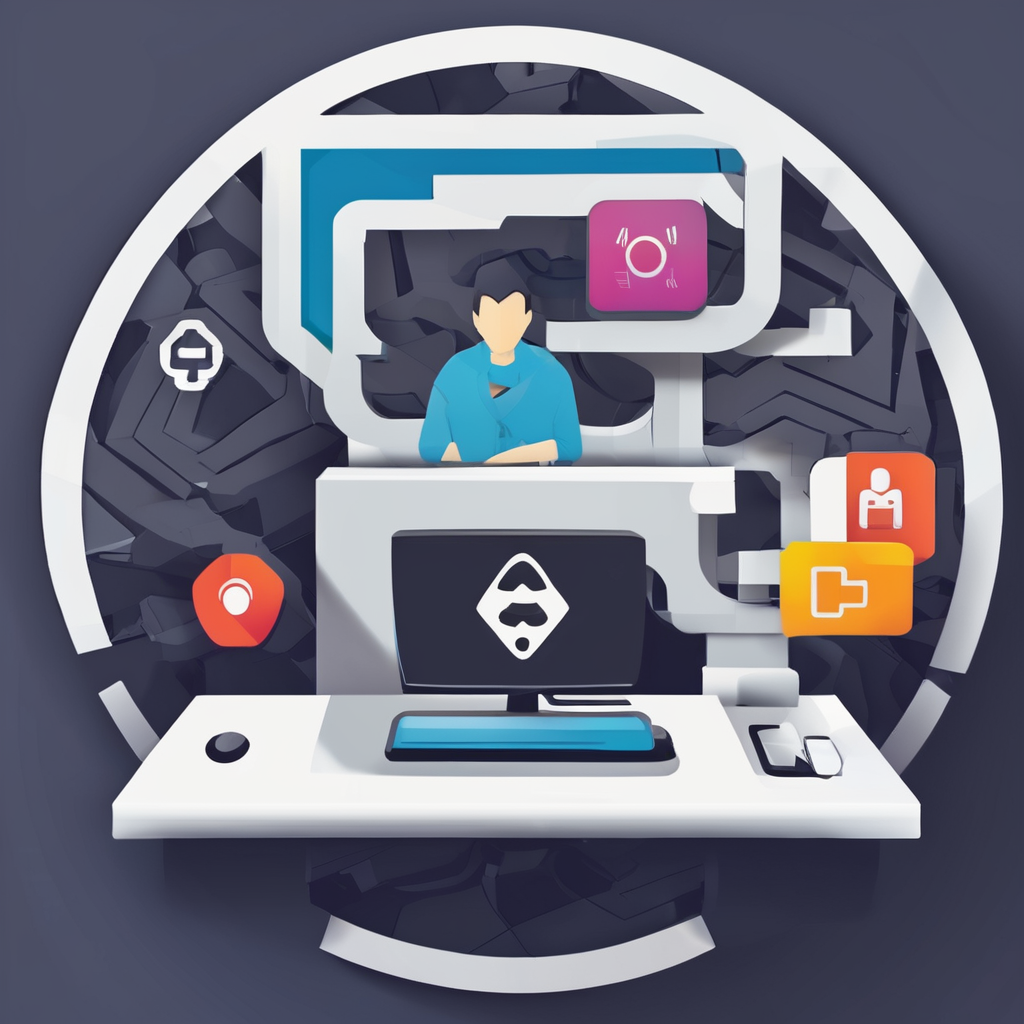Unlocking the Power of Multilingual AI Chatbots: Key Strategies for Optimal Performance
In today’s globalized business landscape, communicating effectively with customers from diverse linguistic backgrounds is crucial for success. Multilingual AI chatbots have emerged as a game-changer, enabling businesses to break down language barriers and enhance customer interactions. Here’s a comprehensive guide on how to unlock the full potential of these advanced tools.
Understanding the Need for Multilingual Chatbots
In a hyperconnected world, businesses are no longer confined to local markets. With over 70% of global consumers preferring to interact with businesses in their native language, the importance of multilingual support cannot be overstated[1].
Also read : Maximize your workflow with top notion templates today
“Imagine your business losing thousands of potential customers because your chatbot can’t speak their language,” highlights the critical nature of this issue. Multilingual chatbots are designed to detect, understand, and respond fluently in multiple languages, incorporating cultural nuances and regional expressions to deliver natural and contextually appropriate interactions.
Best Practices for Implementing Multilingual Chatbots
Effective deployment of multilingual chatbots involves several key strategies:
Also to see : Transforming education: your ultimate blueprint for creating a customized ai-powered learning experience
Language Detection
Accurate language detection is the foundation of a successful multilingual chatbot. This goes beyond simple IP-based assumptions. Instead, the system should analyze user input patterns, browser settings, and explicit language preferences to determine the appropriate language for interaction[1].
| Strategy | Description |
|---|---|
| Language Detection | Use IP detection, browser settings, and user input patterns to determine the user’s language. |
| Natural Language Processing | Implement NLP algorithms optimized for each language to ensure accurate syntax and grammar processing. |
| Translation Services | Utilize advanced translation services and APIs to switch languages seamlessly and maintain conversation context. |
| Cultural Sensitivity | Incorporate cultural intelligence to understand and respect regional norms, idioms, and communication styles. |
| Quality Assurance | Conduct thorough testing with native speakers to ensure natural dialogue flow and appropriate cultural context. |
| Continuous Monitoring | Regularly analyze conversation logs and user feedback to identify areas for improvement and update training datasets. |
| Integration | Ensure the chatbot integrates seamlessly with existing business systems like CRM and customer service platforms. |
Cultural Awareness
A multilingual chatbot must not only translate words but also understand cultural contexts, idioms, and regional variations. This cultural intelligence helps avoid potential misunderstandings or inadvertently offensive responses that could damage customer relationships[1].
Building a Multilingual Chatbot
There are two primary approaches to building a multilingual chatbot:
Implementing Multiple Bots for Multilingual Support
One method involves creating a single bot per language. This approach allows for parallel development, which can speed up the time to market. However, it also presents challenges such as maintaining consistency across different bots and ensuring that each bot is equally effective[2].
Implementing a Single Multilingual Chatbot
An alternative is to leverage cloud-based cognitive services to build a single chatbot that supports multiple languages. This involves implementing a language detector component that works with other services to translate requests and apply them to the Natural Language Understanding (NLU) system. This approach ensures parity in the user experience across all supported languages[2].
Leveraging Advanced AI Technologies
Multilingual chatbots rely heavily on advanced AI technologies such as Natural Language Processing (NLP) and Machine Learning (ML).
Natural Language Processing (NLP)
NLP algorithms analyze linguistic features using probabilistic models, n-grams, or neural embeddings to differentiate between similar languages. Pre-trained models like GPT (Generative Pre-trained Transformer) and LLAMA ensure conversational fluency with context-aware responses[3].
Machine Learning (ML)
ML algorithms incorporate feedback loops to continuously learn from interactions, adapting to slang, cultural nuances, and user preferences. This ensures the chatbot evolves to meet user needs effectively, making it an essential tool for businesses engaging with a diverse, global audience[3].
Real-World Success Stories
Several businesses have successfully implemented multilingual chatbots to enhance their customer interactions:
Duolingo
Duolingo integrated multilingual chatbots into its app to enhance the learning experience. These AI-powered bots enable users to practice languages like French, Spanish, and German through simulated dialogues. Each assistant is imbued with a unique personality, making interactions more engaging and effective[2].
Social Bee
Social Bee, a German organization, developed an AI-based platform to help refugees and migrants navigate complex legal systems. The platform translates legal documents into different languages quickly and accurately, recognizing and adapting to various cultural contexts[4].
Future Directions for Multilingual Chatbots
The evolution of multilingual chatbots is at a fascinating crossroads, with advanced AI algorithms reshaping how machines understand and replicate human languages.
Voice Interactions
Voice interactions represent the next frontier in multilingual chatbot development. With around 58% of consumers using voice search to find nearby businesses, voice-enabled AI applications are transforming customer interactions across industries. This trend signals a shift toward more natural, conversational experiences that transcend traditional text-based interfaces[1].
Multi-Channel Integration
Modern solutions must navigate complex multi-channel environments while maintaining consistent, personalized interactions. This evolution demands sophisticated orchestration capabilities that can coordinate responses across voice, text, and visual interfaces while preserving context and continuity[1].
Practical Insights and Actionable Advice
To ensure optimal performance from your multilingual chatbot, here are some practical insights and actionable advice:
Continuous Improvement
Regularly analyze conversation logs and user feedback to identify areas for improvement. Update training datasets to ensure the chatbot remains relevant and effective over time[1].
Cultural Sensitivity Training
Conduct thorough testing with native speakers to ensure the chatbot understands and respects regional norms, idioms, and communication styles. This helps in avoiding cultural missteps and enhancing customer satisfaction[1].
Integration with Existing Systems
Ensure the chatbot integrates seamlessly with existing business systems like CRM and customer service platforms. This integration helps in providing a cohesive and personalized customer experience[1].
Benefits of Multilingual Chatbots
Multilingual chatbots offer a myriad of benefits that can significantly enhance customer service and business growth.
Enhanced Customer Experience
Multilingual chatbots provide customers with the ability to interact in their preferred language, leading to higher customer satisfaction and engagement. “A multilingual chatbot makes it possible to respond to every customer in their preferred language, without the need for a massive team of agents,” highlights the efficiency and effectiveness of these tools[3].
Increased Customer Reach
By supporting multiple languages, businesses can expand their customer base globally. This is particularly beneficial for companies looking to enter international markets where language barriers might otherwise hinder growth[5].
Consistent and Reliable Support
Multilingual chatbots provide consistent, reliable answers every time, regardless of the language. This consistency is crucial for maintaining high levels of customer satisfaction and trust in the business[3].
Cost Efficiency
While implementing a multilingual chatbot may require initial investment, it can significantly reduce support costs in the long run. Automated support reduces the need for human agents, especially for routine inquiries, allowing human agents to focus on more complex issues[2].
Multilingual AI chatbots are a powerful tool for businesses aiming to enhance customer interactions, expand their global reach, and drive business growth. By implementing the right strategies, leveraging advanced AI technologies, and continuously improving the chatbot’s capabilities, businesses can unlock the full potential of these innovative solutions.
As businesses continue to navigate the complexities of a global market, the importance of multilingual support will only grow. Embracing multilingual AI chatbots is not just a competitive advantage but a necessity for any business looking to thrive in an interconnected world.
Table: Comparing Different Approaches to Building Multilingual Chatbots
| Approach | Advantages | Challenges |
|---|---|---|
| Multiple Bots per Language | Parallel development allows for faster time to market. Each bot can be tailored to a specific language and culture. | Maintaining consistency across different bots can be challenging. Higher resource requirements. |
| Single Multilingual Chatbot | Ensures parity in the user experience across all supported languages. Simplifies maintenance and updates. | Requires advanced language detection and translation capabilities. Initial setup can be complex. |
Detailed Bullet Point List: Key Capabilities of Multilingual Chatbots
- Language Detection: Automatically detect the user’s language using NLP models, browser settings, and user input patterns.
- Natural Language Processing: Implement NLP algorithms optimized for each language to ensure accurate syntax and grammar processing.
- Translation Services: Utilize advanced translation services and APIs to switch languages seamlessly and maintain conversation context.
- Cultural Sensitivity: Incorporate cultural intelligence to understand and respect regional norms, idioms, and communication styles.
- Quality Assurance: Conduct thorough testing with native speakers to ensure natural dialogue flow and appropriate cultural context.
- Continuous Monitoring: Regularly analyze conversation logs and user feedback to identify areas for improvement and update training datasets.
- Integration: Ensure the chatbot integrates seamlessly with existing business systems like CRM and customer service platforms.
- Real-Time Interactions: Provide 24/7 multilingual service, enabling businesses to cater to diverse audiences at scale.
- Machine Learning: Incorporate feedback loops to continuously learn from interactions, adapting to slang, cultural nuances, and user preferences.
- Sentiment Analysis: Analyze customer sentiment in real-time to provide more personalized and empathetic responses.
Quotes
- “A multilingual chatbot makes it possible to respond to every customer in their preferred language, without the need for a massive team of agents.” [3]
- “The evolution of multilingual chatbots stands at a fascinating crossroads, where advanced AI algorithms are reshaping how machines understand and replicate human languages.” [1]
- “Multilingual chatbots provide consistent, reliable answers every time, no matter the language. There’s no guesswork, no variation. It just provides clear, accurate communication.” [3]










